Related Research Articles

Stop motion is an animated filmmaking technique in which objects are physically manipulated in small increments between individually photographed frames so that they will appear to exhibit independent motion or change when the series of frames is played back. Any kind of object can thus be animated, but puppets with movable joints or plasticine figures are most commonly used. Puppets, models or clay figures built around an armature are used in model animation. Stop motion with live actors is often referred to as pixilation. Stop motion of flat materials such as paper, fabrics or photographs is usually called cutout animation.

A storyboard is a graphic organizer that consists of illustrations or images displayed in sequence for the purpose of pre-visualizing a motion picture, animation, motion graphic, or interactive media sequence. The storyboarding process, in the form it is known today, was developed at Walt Disney Productions during the early 1930s, after several years of similar processes being in use at Walt Disney and other animation studios.

Star Trek: The Motion Picture is a 1979 American science fiction film directed by Robert Wise. The Motion Picture is based on and stars the cast of the 1966–1969 television series Star Trek created by Gene Roddenberry, who serves as producer. In the film, set in the 2270s, a mysterious and powerful alien cloud known as V'Ger approaches Earth, destroying everything in its path. Admiral James T. Kirk assumes command of the recently refitted Starship Enterprise to lead it on a mission to determine V'Ger's origins and save the planet.

Traditional animation is an animation technique in which each frame is drawn by hand. The technique was the dominant form of animation, until the final few years of the 20th century, when there was a shift to computer animation in the industry, specifically 3D computer animation.
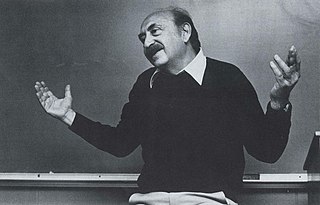
Saul Bass was an American graphic designer and Oscar-winning filmmaker, best known for his design of motion-picture title sequences, film posters, and corporate logos.
Go motion is a variation of stop motion animation which incorporates motion blur into each frame involving motion. It was co-developed by Industrial Light & Magic and Phil Tippett. Stop motion animation can create a distinctive and disorienting staccato effect because the animated object is perfectly sharp in every frame, since each frame is shot with the object perfectly still. Real moving objects in similar scenes have motion blur because they move while the camera's shutter is open. Filmmakers use a variety of techniques to simulate motion blur, such as moving the model slightly during the exposure of each film frame, or placing a glass plate smeared with petroleum jelly in front of the camera lens to blur the moving areas.
James Danforth is an American stop-motion animator, known for model-animation, matte painting, and for his work on When Dinosaurs Ruled the Earth (1970), a theme-sequel to Ray Harryhausen's One Million Years B.C. (1967). He later went on to work with Ray Harryhausen on the film Clash of the Titans (1981) to mainly do the animation of the winged horse Pegasus.

Phil Tippett is an American film director and visual effects supervisor and producer, who specializes in creature design, stop-motion and computerized character animation. Over his career, he has assisted ILM and DreamWorks, and in 1984 formed his own company, Tippett Studio.
Tippett Studio is an American visual effects and computer animation company specializing in computer graphics (CG) for films and television commercials. The studio has created visual effects and animations on over fifty feature films and commercials, garnering an Academy Award, four Clio Awards and two Emmy Awards. The company currently consists of approximately 150 employees, with offices located in Berkeley, California.
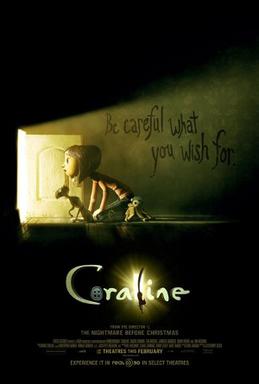
Coraline is a 2009 American stop-motion animated dark fantasy horror film written for the screen and directed by Henry Selick, based on the 2002 novella of the same name by Neil Gaiman. Produced by Laika, as the studio's first feature film, it features the voices of Dakota Fanning, Teri Hatcher, Jennifer Saunders, Dawn French, Keith David, John Hodgman, Robert Bailey Jr., and Ian McShane. The film tells the story of its eponymous character discovering an idealized alternate universe behind a secret door in her new home, unaware that it contains something dark and sinister.
Paul Rudish is an American animator, storyboard artist, writer, and voice actor, originally known for his art, writing, and design work at Cartoon Network Studios on series created by Genndy Tartakovsky. He went on to co-create the series Sym-Bionic Titan and, in 2013, developed, wrote, storyboarded, executive produced, and directed a revival of Mickey Mouse short cartoons.
Previsualization is the visualizing of scenes or sequences in a movie before filming. It is a concept used in other creative arts, including animation, performing arts, video game design, and still photography. Previsualization typically describes techniques like storyboarding, which uses hand-drawn or digitally-assisted sketches to plan or conceptualize movie scenes.
Shot-for-shot is a way to describe a visual work based on an existing work that is transferred almost completely identically from the original work without much interpretation.
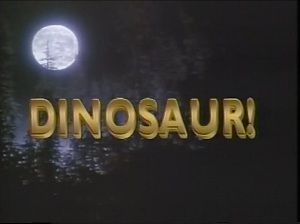
Dinosaur! is a 1985 American television documentary film about dinosaurs. It was first broadcast in the United States on November 5, 1985, on CBS. Directed by Robert Guenette and written by Steven Paul Mark, Dinosaur! was hosted by the American actor Christopher Reeve, who some years before had played the leading role of Superman.

Craig Barron is an American visual effects artist and creative director at Magnopus, a media company that produces visual development and virtual production services for motion pictures, television, museums and multimedia platforms.

A film, also called a movie, motion picture, moving picture, picture, photoplay, or flick—is a work of visual art that simulates experiences and otherwise communicates ideas, stories, perceptions, emotions, or atmosphere through the use of moving images that are generally accompanied by sound and other sensory stimulations. The word "cinema" is a shortening of the word "cinematography" and is used to refer to either filmmaking, the film industry, the overall art form, or a movie theater.
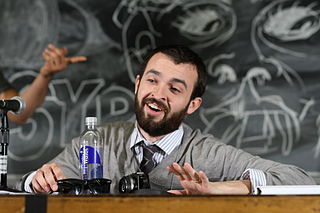
Jamie Wilkinson is an internet culture researcher and software engineer. Wilkinson started Know Your Meme, a database of viral internet memes whilst working at Rocketboom in New York City. Wilkinson also co-founded VHX, a digital distribution platform targeting independent filmmakers, which was acquired by Vimeo in May 2016.
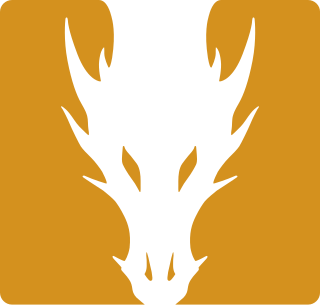
Dragonframe is stop motion animation software. It has been used to make several full-length motion picture films, including Disney's Frankenweenie and Laika's Coraline, The Boxtrolls, and ParaNorman, as well as the stop motion television show Shaun the Sheep. It has also been used to shoot stop motion scenes in live action movies, including the holochess scene in Star Wars: The Force Awakens, and numerous stop motion shorts.
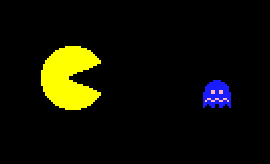
A cutscene or event scene is a sequence in a video game that is not interactive, interrupting the gameplay. Such scenes are used to show conversations between characters, set the mood, reward the player, introduce newer models and gameplay elements, show the effects of a player's actions, create emotional connections, improve pacing or foreshadow future events.
References
- 1 2 3 4 5 6 Stelter, Brian (August 27, 2010). "Fans' 'Star Wars Uncut' Wins an Emmy". The New York Times . Retrieved August 28, 2010.
- ↑ "Exclusive Interview with Casey Pugh, Producer of Star Wars Uncut – Maroon Weekly". Archived from the original on 2013-12-20. Retrieved 2013-12-19.
- 1 2 3 4 5 Lloyd, Robert (August 26, 2010). "'Star Wars Uncut': The world remakes a classic". Los Angeles Times . Retrieved August 28, 2010.
- ↑ Acuna, Kirtsen (January 27, 2012). "Here's What 'Star Wars' Would Look Like If Made By Fans". Business Insider . Archived from the original on July 14, 2012. Retrieved February 2, 2012.
- ↑ Juan F. Marcelo (January 24, 2012). "Nueva versión de Star Wars IV creata (in Spanish) por los aficionados de la saga". Tuexperto.com. Tuexperto.com Internet. Retrieved February 2, 2012.